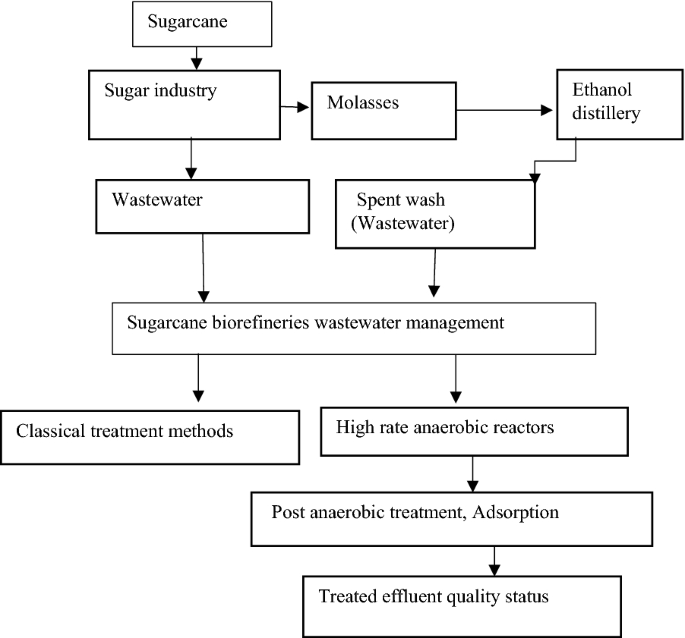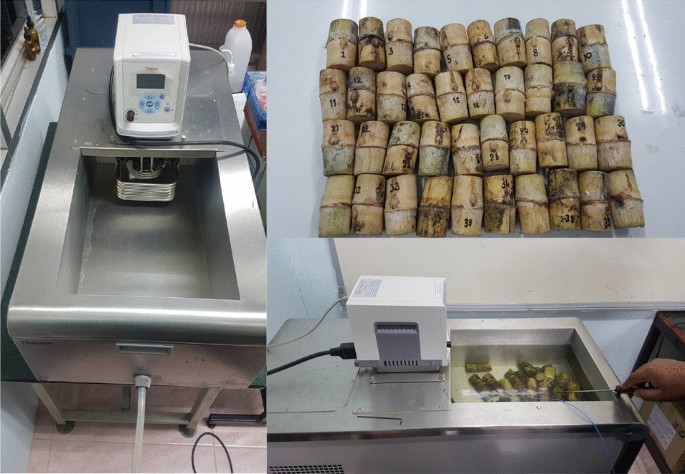Discover the Innovative Advantages of Products From Sugarcane for Lasting Living
Sugarcane has actually emerged as an essential resource in the mission for lasting living. Its varied applications extend eco-friendly product packaging, renewable resource, and healthier food options. As markets seek environmentally friendly alternatives, sugarcane's versatility offers encouraging options. The real possibility of sugarcane prolongs past its current uses. Discovering its cutting-edge advantages could expose new paths toward a much more lasting future. What other opportunities might this impressive plant hold?

The Rise of Sugarcane as a Sustainable Source
As international understanding of environmental concerns grows, sugarcane has emerged as a famous lasting source. This flexible plant offers an array of benefits that contribute to environment-friendly methods. Sugarcane is an eco-friendly source, with the ability of prospering in diverse environments while absorbing carbon dioxide, thereby reducing greenhouse gas exhausts. Its fast development cycle enables for constant harvesting, causing a constant supply of raw material.Additionally, sugarcane farming commonly requires less water compared to other plants, making it a reliable choice in water-scarce regions. The by-products of sugarcane, such as bagasse and molasses, can be repurposed for numerous applications, lowering waste and advertising round economy principles. In addition, improvements in agricultural methods have actually led to more sustainable farming approaches, better improving sugarcane's environmental account. As consumers significantly look for lasting alternatives, sugarcane sticks out as a practical alternative for those dedicated to minimizing their ecological footprint.
Eco-friendly Product Packaging Solutions
How can naturally degradable product packaging options transform the means customers come close to sustainability? By utilizing sugarcane-based products, these cutting-edge solutions supply a compelling choice to standard plastics. Naturally degradable packaging made from sugarcane decays naturally, markedly decreasing landfill waste and greenhouse gas exhausts. As consumers become increasingly familiar with their environmental effect, the need for sustainable product packaging continues to rise.These sugarcane-derived items not only serve useful objectives yet likewise straighten with eco-conscious customer worths. They give a tangible method for people and companies to add to a round economy, advertising resource efficiency and minimizing environmental footprints. Additionally, as markets embrace eco-friendly choices, they cultivate a society of sustainability that resonates with an expanding group looking for liable choices.In significance, biodegradable packaging services from sugarcane represent an essential advance in lasting methods, equipping consumers to make ecologically pleasant choices without giving up ease or quality.
Renewable Power Generation From Sugarcane
A considerable portion of renewable power generation can be stemmed from sugarcane, showcasing its convenience beyond standard farming usages. Sugarcane biomass, consisting of bagasse and leaves, is a potent source for bioenergy production. This biomass can be converted into biofuels such as ethanol, which functions as a cleaner choice to nonrenewable fuel sources. In addition, the burning of sugarcane by-products creates heavy steam and electrical energy, giving an energy resource for sugar mills and nearby communities.The growing of sugarcane also adds to carbon sequestration, as the plants absorb co2 during their development cycle. By utilizing sugarcane for power, waste is reduced, and sustainable practices are encouraged. This renewable energy method not only sustains energy demands but also promotes rural advancement, producing jobs in bioenergy markets. In general, sugarcane stands apart as an essential gamer in the shift to lasting energy services, aligning with international efforts to lower carbon impacts.

Eco-Friendly Textiles and Fabrics
Eco-friendly fabrics and fabrics originated from sugarcane provide an appealing option to standard materials. These naturally degradable options not only decrease environmental effect however likewise offer resilience and performance comparable to standard materials. Sustainable production processes additionally enhance their allure, making them an integral part of a sustainable way of life.
Biodegradable Material Choices
Why is the adjustment toward biodegradable textile choices essential for sustainable living? The increasing understanding of environmental deterioration has motivated a search for alternatives to standard fabrics, which often add to pollution and waste. Eco-friendly fabrics, originated from eco-friendly resources such as sugarcane, use an appealing solution. These products decompose naturally, lowering land fill build-up and reducing environmental impact. Furthermore, they can assist reduced carbon footprints and reliance on nonrenewable fuel sources. As customers become extra eco-conscious, the need for lasting textiles grows, encouraging producers to introduce and spend in naturally degradable choices. This adjustment not just supports lasting techniques yet also cultivates a round economy, leading the way for a much more responsible method to fashion and fabric manufacturing.
Resilience and Efficiency
When assessing environmentally friendly fabrics and textiles, longevity and performance are critical factors. Sugarcane-derived materials demonstrate remarkable toughness and strength, making them appropriate for various applications. These textiles usually show exceptional moisture-wicking properties, which enhance comfort in everyday wear. YOURURL.com Furthermore, their all-natural fibers add to breathability, ensuring that garments stay fresh and wearable even sought after problems. The performance of sugarcane-based textiles includes their resistance to put on and tear, allowing products to keep their integrity in time. Furthermore, these green textiles can be dealt with to enhance UV defense and stain resistance, meeting the functional requirements of customers without jeopardizing sustainability. Eventually, sugarcane fabrics provide a harmonious balance of toughness and performance, attracting environmentally conscious individuals.
Lasting Manufacturing Procedures
The impressive toughness and efficiency of sugarcane-derived fabrics are complemented by lasting production procedures that prioritize environmental responsibility. These procedures utilize sustainable resources, lessening reliance on fossil fuels and minimizing carbon impacts. By utilizing the by-products of sugarcane farming, producers can develop eco-friendly materials while advertising waste decrease. Advanced techniques, such as water-efficient dyeing and naturally degradable treatments, additionally enhance the sustainability of these textiles. Additionally, the usage of non-toxic chemicals guarantees that the production procedure does not harm communities or human health. This commitment to sustainability not just attract eco aware consumers yet also supports local economies by promoting lasting farming methods. On the whole, sugarcane-derived fabrics stand for a significant action in the direction of useful site a greener future in the fashion business.
Sugarcane-Based Biofuels and Their Influence

Sugarcane-based biofuels have actually become a significant different power resource, offering a sustainable service to the globe's expanding energy demands. These biofuels, obtained from the fermentation of sugarcane juice or molasses, provide a more sustainable choice contrasted to fossil gas. Their production process produces reduced greenhouse gas discharges, adding to environment adjustment mitigation efforts.Additionally, sugarcane biofuels can improve energy safety by diversifying power resources and minimizing reliance on imported oil. The farming of sugarcane additionally advertises rural growth, producing tasks and promoting regional economies.However, worries pertaining to land usage and food competitors continue, as boosted biofuel production may impact food supply chains. Lasting agricultural techniques are vital to stabilizing these completing interests and guaranteeing that biofuel production does not threaten food safety and security. Overall, sugarcane-based biofuels represent an appealing avenue for a greener power future, offered that their social and environmental effects are carefully managed.
Healthier Alternatives: Sugarcane in Food Products
While several customers look for healthier choices in their diets, sugarcane products use a healthy option to fine-tuned sugars and fabricated sugar. Acquired from the natural removal of sugarcane juice, these products keep important nutrients, consisting of minerals and vitamins, that are typically lost in processed sugars. Sugarcane contains antioxidants and dietary fiber, adding to general wellness and wellness.Many health-conscious people are turning to sugarcane syrup and jaggery, which give a reduced glycemic index contrasted to standard sugars, making them suitable for those managing blood sugar level levels. Furthermore, sugarcane-derived sweeteners can boost the taste of numerous meals without the unfavorable impacts related to fabricated additives.This change in the direction of all-natural artificial sweetener not only advertises far better nutritional selections however additionally lines up with lasting living methods, as sugarcane is a renewable energy. Sugarcane products are emerging as beneficial choices in the domain name of food items.
The Future of Sugarcane in Sustainable Innovations
The future of sugarcane is positioned to encompass innovative applications that extend beyond traditional usages. Its prospective as a source for biodegradable product packaging services and sustainable power resources highlights its duty in sustainable methods. Exploring these advancements might considerably impact ecological preservation and source management.
Naturally Degradable Packaging Solutions
A raising number of companies are transforming to naturally degradable product packaging solutions originated from sugarcane as a promising choice to typical plastics. These cutting-edge products, usually made from sugarcane fibers and bioplastics, break down normally, lowering the long-lasting environmental impact connected with traditional plastic waste. By utilizing renewable resources, sugarcane-based product packaging adds to a more sustainable production cycle, aligning with worldwide efforts to fight pollution and environment change. In addition, these solutions usually maintain the durability and performance required for different applications, from food containers to shipping products. As customer demand for environment-friendly alternatives grows, organizations taking on sugarcane packaging not only boost their brand image but likewise play an essential function in cultivating a circular economic situation, paving the means for a greener future.
Renewable Energy Sources
Naturally degradable packaging solutions are simply one aspect of the more comprehensive capacity of sugarcane in promoting sustainability. An additional substantial application hinges on renewable resource sources. Sugarcane is a versatile plant that can be made use of to create biofuels, such as ethanol, which functions as a cleaner alternative to nonrenewable fuel sources. The fermentation process of right here sugarcane juice returns ethanol that can power cars and generate power. Additionally, the byproducts of sugarcane processing, like bagasse, can be utilized to create biomass energy, supplying a effective and sustainable approach to harness power. This double function as both a resource of biofuel and biomass emphasizes sugarcane's capacity in reducing carbon discharges and supporting a shift to an extra lasting power landscape in the future.
Often Asked Questions
How Is Sugarcane Gathered Sustainably?
Sugarcane harvesting can be sustainable via methods like hand-operated cutting, which minimizes dirt interruption, and utilizing equipment that lowers gas consumption (Products From Sugarcane). Crop rotation and integrated pest management better improve ecological wellness and advertise lasting soil fertility
What Are the Ecological Influences of Sugarcane Farming?

Can Sugarcane Products Be Recycled?
The inquiry of whether sugarcane items can be recycled exposes a favorable outlook. Many sugarcane-derived materials, such as bioplastics and packaging, are created for recyclability, adding to a much more lasting waste monitoring approach within ecological considerations.
Exist Any Drawbacks to Using Sugarcane-Based Products?
The disadvantages of utilizing sugarcane-based products consist of potential land use competition with food crops, difficulties in large production, and problems concerning the ecological impact of monoculture farming techniques, which can reduce biodiversity and soil health.
Exactly How Does Sugarcane Farming Affect Resident Communities?
Sugarcane cultivation effects neighborhood neighborhoods by offering job opportunity and enhancing local economies. Nevertheless, it can additionally bring about land disputes and environmental problems, impacting farming techniques and area health and wellness, requiring a well balanced approach to advancement. Advancements in farming techniques have actually led to more sustainable farming approaches, additionally enhancing sugarcane's ecological profile. In addition, the combustion of sugarcane byproducts produces steam and electrical energy, giving an energy resource for sugar mills and nearby communities.The growing of sugarcane likewise adds to carbon sequestration, as the plants take in carbon dioxide throughout their development cycle. By using sugarcane for power, waste is lessened, and lasting techniques are encouraged - Products From Sugarcane. Sugarcane contains anti-oxidants and dietary fiber, adding to overall health and wellness and wellness.Many health-conscious individuals are transforming to sugarcane syrup and jaggery, which provide a reduced glycemic index contrasted to conventional sugars, making them ideal for those managing blood sugar levels. Furthermore, the byproducts of sugarcane handling, like bagasse, can be made use of to create biomass energy, offering a efficient and lasting technique to harness energy